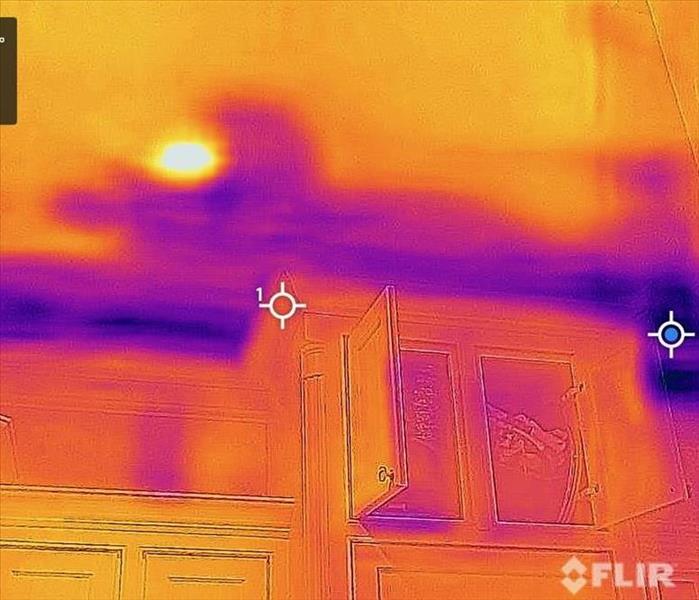Flooding Happens in the Blink of an Eye
5/24/2024 (Permalink)
 Thermal image of wet ceiling and cabinets following an upstairs toilet leak. Purple indicates moisture evaporating from drywall.
Thermal image of wet ceiling and cabinets following an upstairs toilet leak. Purple indicates moisture evaporating from drywall.
Residential leaks and floods can be catastrophic, but quick intervention is key to reducing potential damage:
Depending on the source of the leak, water can fill your space quickly or slowly creep along undetected, saturating everything it encounters.
Water always flows along the “path of least resistance”, which means it can seep into walls, floors, furnishings, and personal items.
Within the First Day of being wet:
- Drywall starts to swell and deteriorate.
- Metal surfaces start to tarnish.
- Furniture begins to swell and develop cracks.
- Dyes and inks from textiles and paper products spread, causing staining.
- An unmistakable musty odor starts to emanate.
48 Hours to One Week:
- Mold and mildew may start to flourish and spread.
- Doors, windows, and structural components may begin to swell and warp.
- Metal surfaces may start to rust and corrode.
- Furniture warps and shows signs of mold growth.
- Paint may begin to bubble and peel.
- Wood flooring may swell and buckle.
- There's a risk of serious biohazard contamination.
Beyond One Week:
- The time and expense of restoration increase significantly; replacing contaminated materials and extensive structural repairs may be necessary.
- Occupant safety is jeopardized due to structural instability, possible proliferation of mold, and other potential biohazards.



 24/7 Emergency Service
24/7 Emergency Service